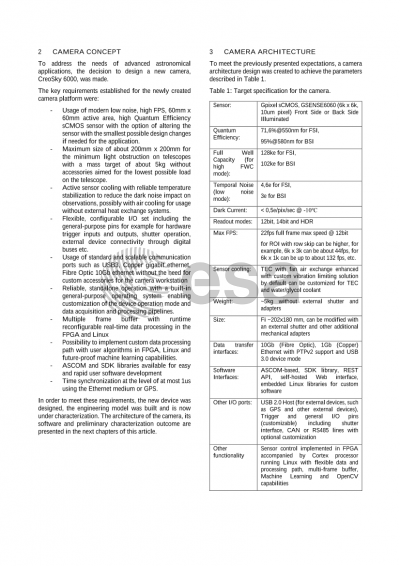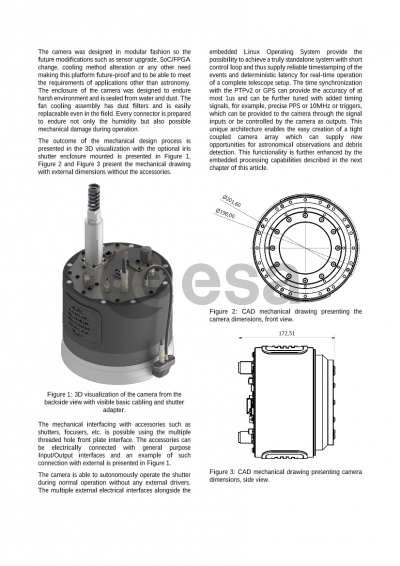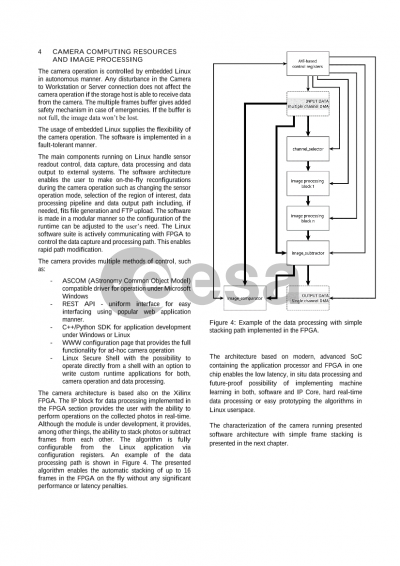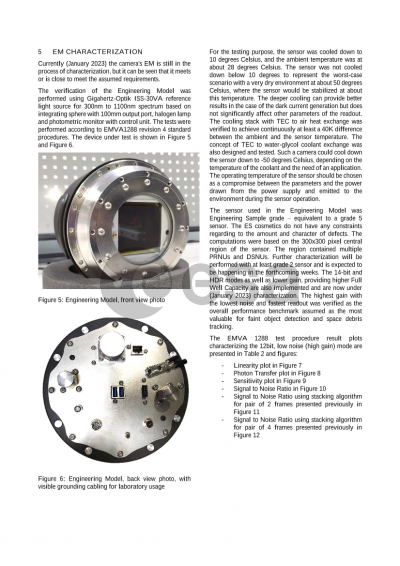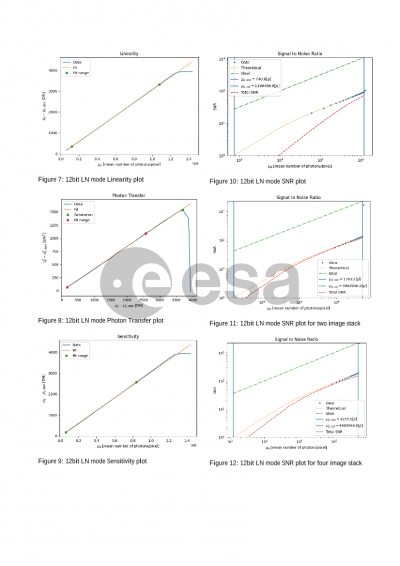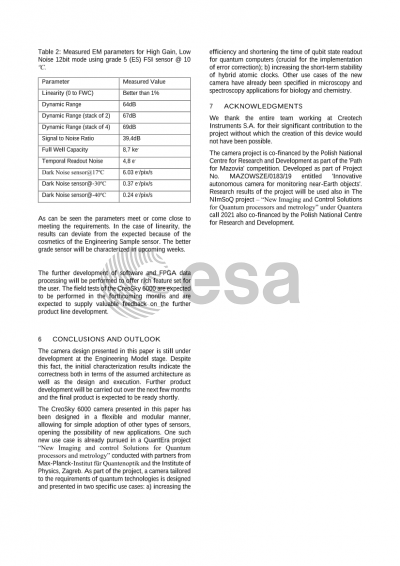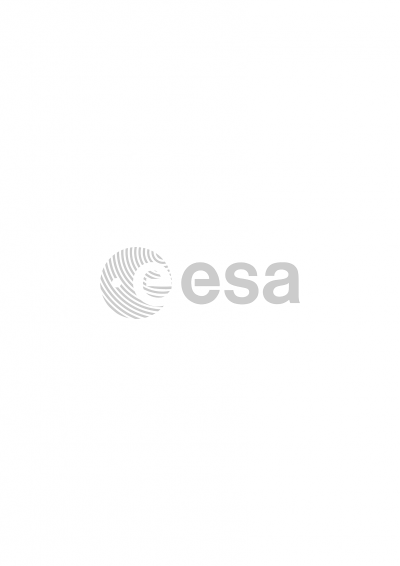Document details

Abstract
Creotech Instruments is currently developing a new generation of innovative sCMOS based imaging devices. The Engineering Model of the astronomical camera intended for Space Surveillance and Tracking (SST) is under verification. The device is designed to meet not only the SST requirements but can also be utilized for NEO and debris detection. The novelty of the apparatus is the capability of edge computing. The device takes advantage of modern FPGA based SoC enabling usage of both, hard real time processing inside the programmable logic and Linux-based preprocessing. The device can operate in autonomous mode without dedicated Workstation or Server. The designed platform gives the future opportunity of Machine Learning algorithms implementation on the Camera which could be the novel approach in astronomical applications. The data pre-processing, even such simple like frame stacking, can significantly reduce the amount of transferred and stored data.
The designed platform is scalable and in currently evaluated model utilizes the TEC-cooled 6k x 6k (37MP) sensor with 10μm square pixel size which gives the photosensitive area of about 61mm x 61mm. The Quantum efficiency, Full Well Capacity, noise, and readout speed of the sensor depends on the model – the Front Side Illuminated is expected to achieve about 71%@550nm, maximum FWC of 127ke, temporal noise of about 4,6e with the maximum readout speed of the sensor to SoC of about 22 full frames per second for 12 bit operation whereas the Back Side Illuminated variant is expected to deliver peak QE of about 95% @ 580nm, maximum FWC of about 95ke, temporal noise of about 2,3e with the expected maximum frame rate of about 22 full frames per second for 12 bit operation. Both variants will also provide 14 bit and HDR operation and are using the Electronic Rolling Shutter that can provide the operation without external mechanical shutter, which is supported as accessory. The camera can be synchronized through PTPv2 and NTP, can utilize the 10GbE through optical fiber simultaneously with 1GbE through copper connection. The USBv3 device mode is supported for camera operation alongside the USBv2 in host mode supporting usage of external accessories, such as GPS receivers. The camera is air cooled but can be modified to make use of glycol-water coolant solution.
The device can be modified to accommodate other sCMOS sensors. This capability will be utilized in our other sensor-based project – the development of novel detector for “New Imaging and control Solutions for Quantum processors and metrology” project conducted with our partners from Max-Planck-Institut für Quantenoptik and The Institute of Physics, Zagreb. The development is aiming on increasing the efficiency of qubit state readout for quantum computers. This is crucial for future implementation of error correction protocols and for improving short-term stability of hybrid atomic clocks. The proposed camera will allow for obtaining deterministic, microsecond-scale latencies of high fidelity (99,9%) qubit readout combined with control system response in advanced quantum algorithms, multiqubit operation and error correction protocols in architectures based on cold-atom or trapped-ion qubits.
During the new development Creotech Instruments benefits from the experience gained during the development activities of imaging devices for projects such as Pi of the Sky (cameras for Las Palmas Observatory in Chile), ASOPEK (cameras for Air Force Institute of Technology’s SST telescope), Neostel, PIAP military robotic cameras and others performed by Creotech in the past. The company has also the experience in control and measurement systems and components for High Energy Physics development for partners such as CERN, GSI, CCFE, LNLS and numerous others which also benefit largely.
Preview

